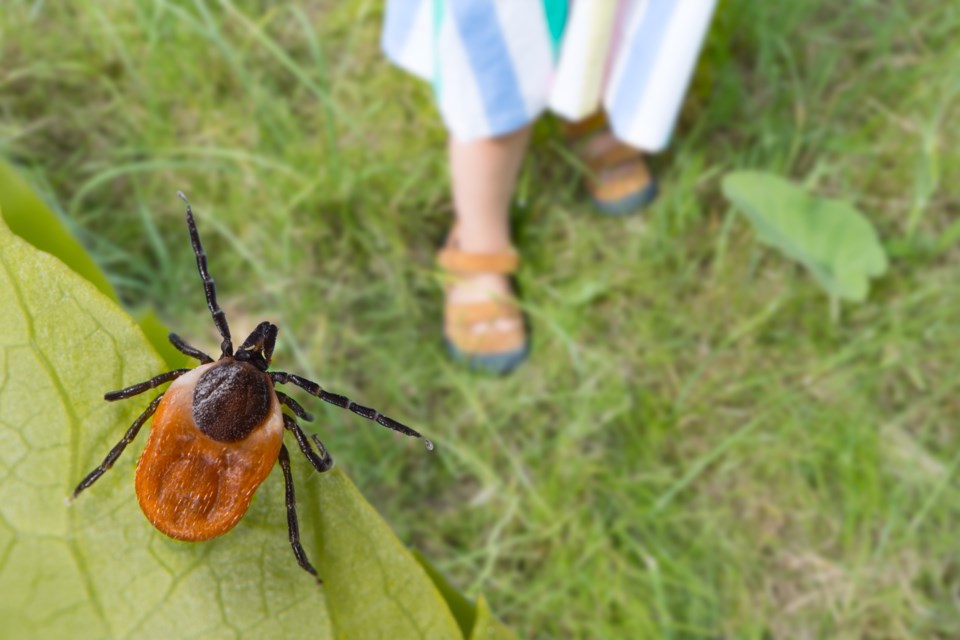THUNDER BAY — A popular hiking spot off Belrose Road identified as a hotspot for blacklegged ticks appears to be getting even more dangerous.
"Active surveillance found a huge number of ticks" at Rabbit Mountain this spring, said Ken Deacon, coordinator of the vector-borne disease surveillance program at the Thunder Bay District Health Unit.
The arachnids can latch onto humans and animals and transmit the bacteria that causes Lyme disease.
Ontario Public Health declared Thunder Bay a designated risk area for the disease in 2019, based on the results of ongoing surveillance by the TBDHU.
Deacon said active surveillance (done by dragging a white flannel sheet over the ground) at Rabbit Mountain would normally see five to 12 blacklegged ticks collected.
This year, he said "We had 58 in two drags. So that was astronomical."
Deacon said the bugs were shipped to the National Microbiology Laboratory in Winnipeg where 60 per cent of them tested positive for Lyme disease.
"It was frightening for me. I just wouldn't bother going hiking at Rabbit Mountain. It's a very popular spot."
He said he knows someone who takes his dogs there for walks on a regular basis, something he would strongly discourage.
"Obviously there's localized abundance, and there's been some really good tick survival. What it tells me is that the ticks are happy, and they're probably going to increase in number. The season this year has been pretty favourable for them."
TBDHU does active surveillance for blacklegged ticks at five monitoring stations dispersed around the Thunder Bay area.
Surveys in these areas should be complete by the end of this month.
TBDHU also relies on members of the public to participate in its passive surveillance program by bringing suspected blacklegged ticks to its office at 999 Balmoral Street, or to any health unit office in the district.
Photos of ticks may also be submitted online for identification.
Most ticks in this area are wood ticks.
Besides the colour of their legs, blacklegged ticks may be distinguished by their orange/brown colour, and a black "shield" covering the front part of the body.
"Take precautions," Deacon advised.
"They're out there. If you're bushwhacking, wear long trousers and light-coloured garments, and do a really good tick check afterwards. Sometimes you don't notice they've been on you, so watch for symptoms that can be signs of a summer flu kind of thing."
The Public Health Agency of Canada reports the incidence of Lyme disease has escalated significantly in recent years, and that blacklegged ticks are spreading to new areas of the country due partly to climate change.
